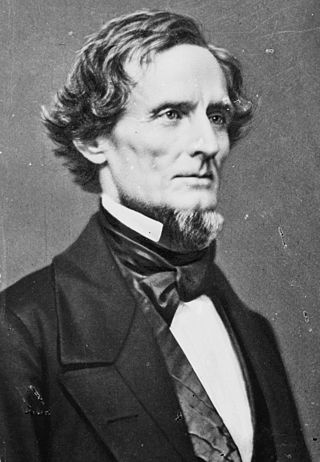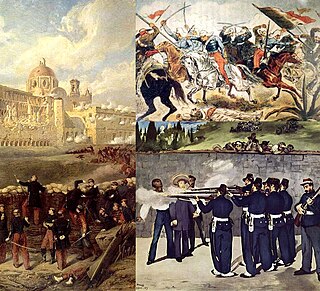This article needs additional citations for verification .(May 2022) |
| |||||||||||||||||||||||||||||
All 430 seats in the Diet 216 seats needed for a majority | |||||||||||||||||||||||||||||
|---|---|---|---|---|---|---|---|---|---|---|---|---|---|---|---|---|---|---|---|---|---|---|---|---|---|---|---|---|---|
| |||||||||||||||||||||||||||||
Parliamentary elections were held in Hungary in 1861. The Address Party won a majority of the seats. [1]
This article needs additional citations for verification .(May 2022) |
| |||||||||||||||||||||||||||||
All 430 seats in the Diet 216 seats needed for a majority | |||||||||||||||||||||||||||||
|---|---|---|---|---|---|---|---|---|---|---|---|---|---|---|---|---|---|---|---|---|---|---|---|---|---|---|---|---|---|
| |||||||||||||||||||||||||||||
Parliamentary elections were held in Hungary in 1861. The Address Party won a majority of the seats. [1]
 | ||
|---|---|---|
| Party | Seats | |
| Address Party | 250 | |
| Resolution Party | 100 | |
| Minorities' Party | 60 | |
| Far-Left | 20 | |
| Total | 430 | |

The American Civil War was a civil war in the United States. It was fought between the Union and the Confederacy, the latter formed by states that had seceded. The central cause of the war was the dispute over whether slavery would be permitted to expand into the western territories, leading to more slave states, or be prevented from doing so, which was widely believed would place slavery on a course of ultimate extinction.

The Confederate States of America (CSA), commonly referred to as the Confederate States or the Confederacy, was an unrecognized breakaway herrenvolk republic in the Southern United States that existed from February 8, 1861, to May 9, 1865. The Confederacy comprised U.S. states that declared secession and warred against the United States during the American Civil War: South Carolina, Mississippi, Florida, Alabama, Georgia, Louisiana, Texas, Virginia, Arkansas, Tennessee, and North Carolina. Kentucky and Missouri also declared secession and had full representation in the Confederate Congress, though their territory was largely controlled by Union forces after 1862.

The flags of the Confederate States of America have a history of three successive designs during the American Civil War. The flags were known as the "Stars and Bars", used from 1861 to 1863; the "Stainless Banner", used from 1863 to 1865; and the "Blood-Stained Banner", used in 1865 shortly before the Confederacy's dissolution. A rejected national flag design was also used as a battle flag by the Confederate Army and featured in the "Stainless Banner" and "Blood-Stained Banner" designs. Although this design was never a national flag, it is the most commonly recognized symbol of the Confederacy.

The First Battle of Bull Run, also known as the Battle of First Manassas, was the first major battle of the American Civil War. The battle was fought on July 21, 1861, in Prince William County, Virginia, just north of the city of Manassas and about thirty miles west-southwest of Washington, D.C. The Union's forces were slow in positioning themselves, allowing Confederate reinforcements time to arrive by rail. Each side had about 18,000 poorly trained and poorly led troops. It was a Confederate victory, followed by a disorganized retreat of the Union forces.

The flags of the U.S. states, territories, and the District of Columbia exhibit a variety of regional influences and local histories, as well as different styles and design principles. Modern U.S. state flags date from the turn of the 20th century, when states considered distinctive symbols for the 1893 World's Columbian Exposition in Chicago, Illinois. Most U.S. state flags were designed and adopted between 1893 and World War I.

The president of the Confederate States was the head of state and head of government of the Confederate States. The president was the chief executive of the federal government and was the commander-in-chief of the Confederate Army and the Confederate Navy.

The Provisional Congress of the Confederate States, also known as the Provisional Congress of the Confederate States of America, was a congress of deputies and delegates called together from the Southern States which became the governing body of the Provisional Government of the Confederate States from February 4, 1861, to February 17, 1862. It sat in Montgomery, Alabama, until May 21, 1861, when it adjourned to meet in Richmond, Virginia, on July 20, 1861. In both cities, it met in the existing state capitols which it shared with the respective secessionist state legislatures. It added new members as other states seceded from the Union and directed the election on November 6, 1861, at which a permanent government was elected.
The 1860–61 United States House of Representatives elections were held on various dates in various states between August 6, 1860 and October 24, 1861, before or after the first session of the 37th United States Congress convened on July 4, 1861. The number of House seats initially increased to 239 when California was apportioned an extra one, but these elections were affected by the outbreak of the American Civil War and resulted in over 56 vacancies.

The 36th United States Congress was a meeting of the legislative branch of the United States federal government, consisting of the United States Senate and the United States House of Representatives. It met in Washington, D.C. from March 4, 1859, to March 4, 1861, during the third and fourth years of James Buchanan's presidency. The apportionment of seats in the House of Representatives was based on the 1850 United States census. The Senate had a Democratic majority, and the House had a Republican plurality.

The 37th United States Congress was a meeting of the legislative branch of the United States federal government, consisting of the United States Senate and the United States House of Representatives. It met in Washington, D.C. from March 4, 1861, to March 4, 1863, during the first two years of Abraham Lincoln's presidency. The apportionment of seats in the House of Representatives was based on the 1850 United States census.

The second French intervention in Mexico, also known as the Second Franco-Mexican War (1861–1867), was an invasion of the Second Federal Republic of Mexico, launched in late 1862 by the Second French Empire, at the invitation of Mexican conservatives. It helped replace the republic with a monarchy, known as the Second Mexican Empire, ruled by Emperor Maximilian I of Mexico, member of the House of Habsburg-Lorraine which ruled colonial Mexico at its inception in the 16th century.
The 1861 United States Senate election in New York was held on February 5, 1861, by the New York State Legislature to elect a U.S. Senator to represent the State of New York in the United States Senate.
Members of the New South Wales Legislative Assembly who served in the fourth parliament of New South Wales held their seats from 1860 to 1864: The Speaker was Terence Murray until 13 October 1862 and then John Hay.

The 1860–61 United States Senate elections were held on various dates in various states. As these U.S. Senate elections were prior to the ratification of the Seventeenth Amendment in 1913, senators were chosen by state legislatures. Senators were elected over a wide range of time throughout 1860 and 1861, and a seat may have been filled months late or remained vacant due to legislative deadlock. In these elections, terms were up for the senators in Class 3.

The 1861 Confederate States presidential election of November 6, 1861, was the only presidential election held under the Permanent Constitution of the Confederate States of America. Jefferson Davis, who had been elected president and Alexander H. Stephens, who had been elected vice president, under the Provisional Constitution, were elected to six-year terms that would have lasted from February 22, 1862 until February 22, 1868. In fact, both Davis and Stephens' offices were abolished on May 5, 1865 when the Confederate government dissolved.

The 1861 United States Senate special election in Pennsylvania was held on March 14, 1861. David Wilmot was elected by the Pennsylvania General Assembly to the United States Senate.

The 1861 United States Senate election in Pennsylvania was held on January 8, 1861. Edgar Cowan was elected by the Pennsylvania General Assembly to the United States Senate.
Members of the New South Wales Legislative Council who served from 1861 to 1864 were appointed for life by the Governor on the advice of the Premier. The 1855 Constitution of New South Wales provided that the first council was appointed for a period of 5 years, but that subsequent members would be appointed for life. The previous council had ended in controversy with an attempt was made to swamp the chamber by appointing 21 new members in May 1861, because the council had rejected the Robertson land bills. When the council met and the new members were waiting to be sworn in, the President Sir William Burton stated that he felt he had been treated with discourtesy in the matter, resigned his office of president and his membership, and left the chamber. 19 other members also resigned in protest. In the absence of the President and Chairman of Committees, under the standing orders the council was adjourned. There were no further sitting days before the terms of the members of council had expired.